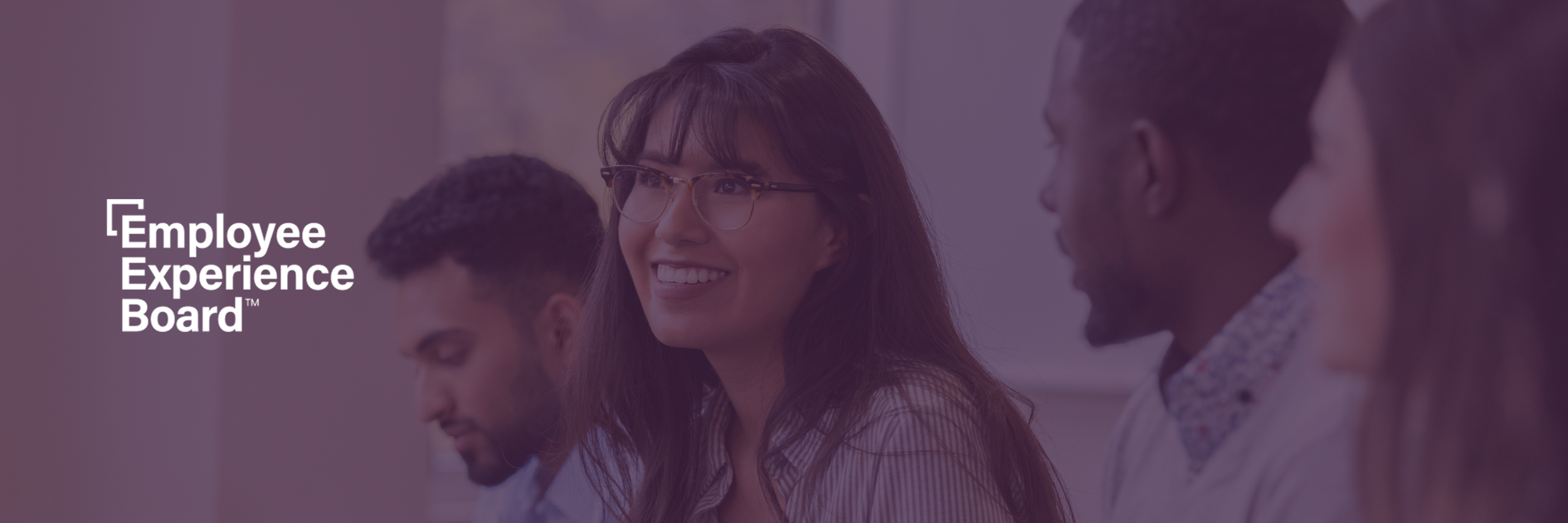Key takeaways:
- Leverage data-driven insights: Use your existing HR information system to collect employee data and listen directly to employees for informed decisions and better alignment with their needs.
- Leadership engagement enhances your commitments: Gain buy-in from leaders at all levels, as their support sets the tone, drives commitment, and facilitates resource allocation for EX initiatives.
- Start from where you are: Begin with your existing processes and prioritize the employee experience, regardless of your budget, to make meaningful progress.
Cultivating a positive employee experience (EX) has become a top priority for organizations aiming to attract and retain top talent.
In a recent Employee Experience Board panel, senior EX leaders shared their insights on how to establish the foundation for a successful EX program in partnership with HR.
Our members provided insights on the importance of data, leadership support, and starting wherever you are.
Let’s dive deeper into these key elements to understand how you can initiate and strengthen your EX program.
Leverage Employee Data to Make Informed and Strategic Decisions
Kate Zimberg, Senior Vice President of Human Resources at F5, emphasized the significance of having access to data in order to understand your employee base effectively.
She noted that a robust HR Information System (HRIS) is essential for collecting information about employees’ locations, demographics, and overall sentiment.
Kate added that having access to this data is crucial for making informed decisions and optimizing various aspects of HR and the employee experience, such as real estate solutions and HR process design.
“I think it’s great to be able to directly tap employees and managers, and to actually listen to them and bring their voice in directly — not just through numerical data,” Kate said. “Actually talking with them, I think, is super important to a strong program.”
She emphasized how data-driven insights enable you to identify pain points and areas for improvement, making it easier to align your strategies with employees’ needs.
“I think it’s great to be able to directly tap employees and managers, and to actually listen to them and bring their voice in directly — not just through numerical data.”
Kate Zimberg, F5
Leadership Engagement Drives Commitment for Enhanced EX Initiatives
Christopher Hawkins, Director of HRIS, Payroll, Data Governance, and Reporting at Grainger, highlighted the importance of gaining support from leadership at all levels.
He explained that having leaders who understand and value the significance of the employee experience can be a game-changer.
He added how having the data in the systems along with leadership buy-in has helped enhance their EX efforts.
“Having the data in the systems to be able to help guide us has been very beneficial along the way,” Christopher said. “One thing that has been helpful in regards to gathering that data is doing surveys to our different populations and hearing their voice through that.”
Their commitment and thought leadership set the tone for the entire organization, making it clear that EX is a top priority. This support not only drives enthusiasm and commitment but also facilitates the allocation of resources and budget for EX initiatives.
As Christopher noted, when leaders are aligned, it becomes easier to implement changes that benefit both employees and the organization.
“One thing that has been helpful in regards to gathering that data is doing surveys to our different populations and hearing their voice through that.”
Christopher Hawkins, Grainger
Start From Where You Are
Nicole Sloane, HR Director of Global Employee Experience at Kimberly-Clark, offered a message of hope to those feeling overwhelmed by the idea of starting an EX program. She emphasized that every company is unique, and there’s no one-size-fits-all approach to EX.
The key is to get started, regardless of your budget or resources. Start by developing a vision and understanding what you’re trying to achieve.
“It’s not so important how you do it, but that you do something,” Nicole said. “Getting started is really important. Just start from where you are. You can literally have any size budget, or maybe you have no budget, but you can still make an impact.”
She explained it helps to begin with what you already have and assess whether your current practices prioritize the employee experience.
“Getting started is really important. Just start from where you are. You can literally have any size budget, or maybe you have no budget, but you can still make an impact.”
Nicole Sloane, Kimberly-Clark
Often, it’s about looking at existing processes through a new lens, focusing on how they impact employees and managers. By methodically building structure, standards, and guiding principles aligned with your overall strategy, you can work toward your desired state.
Kate echoed Nicole’s sentiment about starting with your existing processes. She added that you don’t need to reinvent the wheel. Evaluate your current HR practices and consider how you can improve them by putting the employee’s experience at the forefront.
“You can make a lot of progress just by starting with what you already have, which may not take an additional budget,” Kate said.
The key is to shift your perspective and find opportunities to enhance the employee journey within your current framework.
Use Peer Insights to Benchmark Your Employee Experience Strategy
The foundation for an effective employee experience program lies in data, leadership support, and a proactive attitude.
By embracing these principles, you can build a strong and adaptable EX program that not only benefits your employees, but also contributes to the overall success of your organization.
And if you want to learn more steps needed to lay the foundation for an effective EX program, you can benchmark your strategy in the Employee Experience Board.
Our members meet weekly to discuss their top priorities and share methods needed to advance EX at the world’s largest companies.


